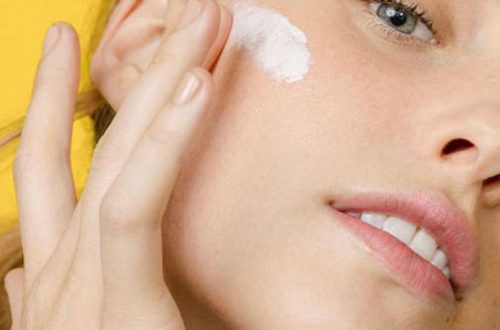Acids for the face: Discover everything you need to know to choose an AHA exfoliator
We like to treat the skin of our face delicately: which is why there are many care routines designed to take care of the complexion.
For this reason, thinking about applying acids to your face could cause you concern. However, you should not let the name scare you off. Acids, such as the well-known alpha hydroxy acids (AHAs), offer excellent benefits for the skin.
Known for their exfoliating properties, AHAs can break down the “glue” that holds dead skin cells together. By dissolving those bonds, the dead cells fall off: allowing new skin to remain on the surface. AHA scrubs can unclog pores, treat pimples, reduce hyperpigmentation, and smooth fine lines all at once.
Coming from various sources such as sugar cane or citrus, these water-soluble acids are especially versatile. Depending on which one you choose, you can benefit from its particular characteristics, such as boosting collagen or moisturizing your skin.
What are the different types of AHAs? From where do they come? Which one is right for your skin type? Here you will find the answers: we have compiled everything you need to know about the most common AHAs exfoliants.
Glycolic acid is the alpha hydroxy acid with the smallest molecules of all, which allows it to penetrate tissues and penetrate the skin, reaching deeper. The more it penetrates, the more results it produces. Not only does it remove dead cells, but it also acts on damage caused by the sun, hyperpigmentation, wrinkles, and expression lines.
Plus, this cane sugar-derived acid is a humectant, drawing in moisture and keeping skin hydrated. Without a doubt, it is the most powerful acid of all AHAs. But you have to be careful with its high effectiveness: this acid is very strong, and it can irritate the skin if you are not used to using it. Start little by little, with a product that contains less than 5% of this acid and then gradually increase, resorting to preparations that have 8 to 10%.
Lactic acid
Lactic acid is an excellent option to start using AHAs. It comes from sour milk and has larger molecules than glycolic acid. Lactic acid has multiple functions and does all that glycolic acid does, but more gently since the molecules take longer to penetrate the skin.
To take advantage of the moisturizing properties of lactic acid, look for a product with a 2% concentration or higher. For correct exfoliation, you will need a concentration of between 5 and 10%. If you want your epidermis to thicken and boost collagen production, opt for a higher concentration (around 12%).
Mandelic acid
Among the list of great components of the skin, is mandelic acid. It has larger molecules, so it is an excellent AHA exfoliant to “maintain” the good condition of the skin. It works more slowly, being ideal for extremely sensitive skin. However, it is also effective in combating hyperpigmentation, sun damage, and fine lines. Mandelic acid is obtained from bitter almonds, it has great antimicrobial properties and protects the skin from acne.
Malic acid
Malic acid is another of the large molecule AHAs. In this case, it comes from apples. It has exfoliating characteristics, but it is not powerful enough to act as a single ingredient. At concentrations greater than 2%, malic acid is an excellent co-worker with glycolic and lactic acid. Combined with malic acid, these work more effectively.
Tartaric acid
The size of the tartaric acid molecules is double that of glycolic acid. Therefore, it penetrates the skin too slowly to be effective on its own. This AHA stands out for being a good PH regulator. Tartaric acid is found in grapes, bananas, and tamarinds. It contains antioxidant properties and is an excellent supplement to stronger acids for better results.
Citric acid
As the name suggests, this AHA comes from citrus fruits like oranges and lemons. Although this AHA works as an exfoliant in concentrations of 10% or more, its low pH of 2.2 contributes to increased skin sensitivity. Among the most prized characteristics of citric acid are its antioxidant and antibacterial properties.
It is usually present in acne products and sunscreens, in low concentrations. As tartaric acid is an excellent pH regulator, it is often used to maintain the acid-alkaline ratio of products in a range that guarantees its effectiveness and is not irritating.




